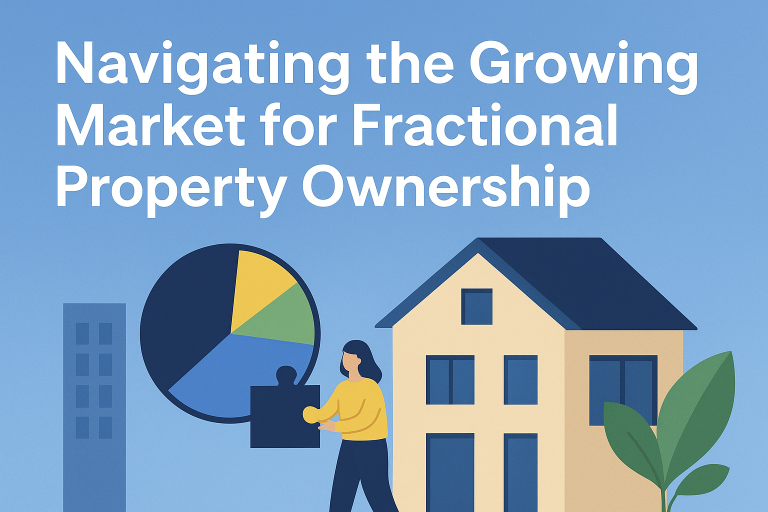Navigating the Growing Market for Fractional Property Ownership
Although having real estate has long been seen as a sign of sound financial standing, complete ownership is not always possible due to the rapidly rising costs of real estate. Presenting fractional ownership, one of the 2025 real estate trends with the quickest rate of growth. With the help of this creative approach, several investors can jointly own a property and split the expenses and rewards.

Fractional ownership: what is it?
By dividing property into shares, fractional ownership enables each investor to purchase a portion, such as 1/8th or 1/10th, of a valuable asset. Fractional ownership gives you true ownership of the property, including legal rights and the possibility of capital growth, in contrast to timeshares, which merely grant you usage rights. It’s a hassle-free investment because professional management firms take care of maintenance, leasing, and compliance.
Why It’s Getting More Popular
Three factors—high real estate costs, transparency made possible by technology, and the desire for passive income—are driving the growth of fractional ownership. Fractional models enable smaller investors to participate in premium assets that were previously only available to institutional buyers in cities like Bangalore, Delhi, and Mumbai, where Grade A commercial properties may cost crores.
Advantages for Investing
Access to high-yield properties is made more accessible through fractional ownership. Investors can diversify among a number of assets and minimise risk by using smaller ticket sizes. Returns are derived from both long-term appreciation and rental revenue. Professional managers guarantee occupancy and compliance, and digital tools offer dashboards for monitoring performance in real time.
Challenges to Consider
There are risks associated with fractional ownership, just like with any investment. Compared to stocks, liquidity is limited, and unless secondary markets develop, selling your stake may take some time. Working with platforms that provide transparent documentation and compliance with RERA and SEBI rules is crucial because legal frameworks are still changing. Investors also need to think about recurring management fees.
New Application Cases
Fractional models are making their way into co-working spaces, luxury vacation residences, and even farms in addition to commercial real estate. Imagine owning a portion of a boutique property in Lonavala or a luxury home in Goa, with scheduled access and expert maintenance. This opens up both financial and lifestyle rewards.
The Road Ahead
Over the next ten years, fractional ownership is anticipated to increase significantly in India, particularly as secondary markets expand and digital platforms foster investor confidence. It gives investors easier access to high-end real estate and creates new revenue sources for developers.
The Bottom Line
By lowering entrance barriers, fractional property ownership is enabling regular investors to acquire assets that were previously only available to the wealthy. It’s one of the most interesting methods to increase your money in real estate in 2025.
Get in touch with Upgrade Realty
Are you looking to invest in fractional properties in Mumbai or other parts of India to diversify your portfolio? For all of your real estate requirements, get in touch with Upgrade Realty. Our staff will assist you in evaluating properties, assessing platforms, and selecting investments that strike a balance between security and returns.
